Glacialt bjergartsmel: Ny bæredygtig næring til forarmede tropejorde
Geovidenskabelig forskning er en nødvendigt forudsætning for at kunne forfølge en række af FN’s mål for bæredygtig udvikling. En række af verdens problemer har deres rod i manglende tilgængelighed af ressourcer som er ulige fordelt på jorden. Vi vil søge at undersøge muligheder og barrierer for at udnytte en hidtil ikke erkendt mineralsk ressource fra Grønland.
Den grønlandske indlandsis knuser det fjeld den hviler på til et fint pulver, som vi har valgt at kalde gletsjermel. Dette gletsjermel består af ekstremt små partikler af de almindeligste mineraler i fra grundfjeldet, og føres med smeltevand fra isen til søer og fjorde hvor det aflejres som mudder.
Mudder består normalt af lermineraler, som er restproduktet efter forvitring af grundfjeldets mineraler. Under forvitring frigives mineralske næringsstoffer til de planter og mikroorganismer der lever i jorden. Det der bliver til rest er lermineraler, som derfor oftest er forarmede i næringsstoffer. I troperne og subtroperne sker forvitring hurtigt på grund af det varme og fugtig klima, og tropejorde er derfor i reglen yderst næringsfattige. Gletsjermel er derimod rigt på alle de mineralske næringsstoffer, fordi det er mekanisk nedknust i et koldt klima, og ikke har gennemgået forvitring. Da det er meget finkornet, vil næringsstofferne i gletsjermel være let tilgængelige for planter og mikroorganismer i varmere klimaer.
Vi forslår derfor at man kan vitalisere jorde i tropiske og subtropiske områder af jorden, og derved medvirke til øget fødevareproduktion, øget næringsværdi af afgrøder og dermed forbedret sundhed og velstand i disse egne.
Vi har påvist at gletsjermel virker positivt på plantevækst, og ønsker nu at evaluere ressources størrelse og tilgængelighed i Grønland. Vi vil gennemføre seismiske undersøgelser af et kompleks af smeltevandselve, søer og fjorde nord for Nuuk, hvor der tilsyneladende findes store aflejringer, og dokumentere hvor meget der er og undersøge aflejringernes tilgængelighed og mudderets beskaffenhed gennem boreprøver. Dermed håber vi, at kunne skabe grundlag for nye erhverv i Grønland og forbedre udbytte og kvalitet i tropiske og subtropiske landbrug.
Glacial rock flour: New sustainable nutrition for depleted tropical soils
Geoscience research is a crucial component in the pursuit of many of the UN sustainable development goals. Many problems of global significance have their roots in lacking access to resources that are unevenly distributed globally. We wish to investigate the opportunities and barriers for developing a new and hitherto unrecognized mineral resource in Greenland.
The Greenland Ice Sheet crushes it substrate rocks into a fine rock flour. This glacial rock flour, which consist of extremely fine particles of the common rock forming minerals from the basement, is washed into fiords and lakes by meltwater rivers draining the ice sheet. Here it settles into extensive deposits of mud.
Most mud in warmed climates, consist of clay minerals, which are the residue from weathering of primary nutrient rich minerals. During weathering the nutrients are released to plants and microorganisms in the soil, and the residual clay minerals are thus mostly highly depleted in nutrients. Under tropical and sub-tropical climate weathering is fast and extensive, and tropical soil are mostly nutrient poor. Glacial rock flour, on the contrary, is rich in mineral nutrients, because is formed by mechanical crushing under cold Arctic conditions, where no weathering has taken place. Due to the very fine grainsize and large surface area, the nutrients in the glacial rock flour will be easily accessible to plants and microorganism under warmer climates.
We propose that soil in tropical and sub-tropical regions can be vitalized by application of glacial rock flour, which will lead to increased crop yield and crop quality.
We have already proven that application of glacial rock flour to soils boosts plant growth. With this project, we wish to determine the size of the resource and its accessibility in the Nuuk region in Greenland. We will determine the extent of deposits using seismic methods, and sample the mud to determine its exact properties by coring. We hope these investigation will help provide the basis for a new Greenlandic business development and support sustainable development in the tropic through improving crop yield and quality in the agriculture of the region.




